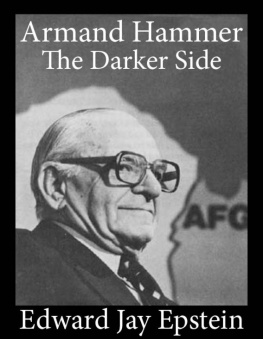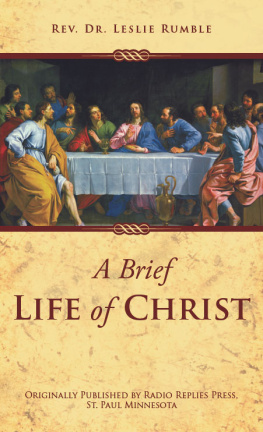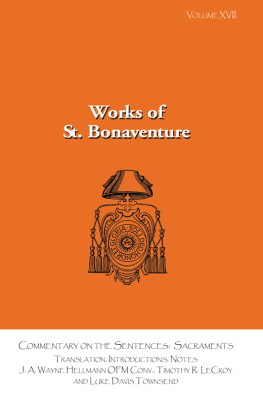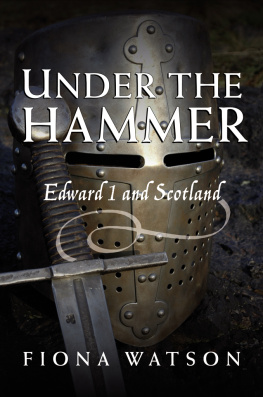Rev. Fr. Bonaventure Hammer - The Fourteen Holy Helpers
Here you can read online Rev. Fr. Bonaventure Hammer - The Fourteen Holy Helpers full text of the book (entire story) in english for free. Download pdf and epub, get meaning, cover and reviews about this ebook. year: 2014, publisher: TAN Books, genre: Religion. Description of the work, (preface) as well as reviews are available. Best literature library LitArk.com created for fans of good reading and offers a wide selection of genres:
Romance novel
Science fiction
Adventure
Detective
Science
History
Home and family
Prose
Art
Politics
Computer
Non-fiction
Religion
Business
Children
Humor
Choose a favorite category and find really read worthwhile books. Enjoy immersion in the world of imagination, feel the emotions of the characters or learn something new for yourself, make an fascinating discovery.

- Book:The Fourteen Holy Helpers
- Author:
- Publisher:TAN Books
- Genre:
- Year:2014
- Rating:4 / 5
- Favourites:Add to favourites
- Your mark:
- 80
- 1
- 2
- 3
- 4
- 5
The Fourteen Holy Helpers: summary, description and annotation
We offer to read an annotation, description, summary or preface (depends on what the author of the book "The Fourteen Holy Helpers" wrote himself). If you haven't found the necessary information about the book — write in the comments, we will try to find it.
The Fourteen Holy Helpers — read online for free the complete book (whole text) full work
Below is the text of the book, divided by pages. System saving the place of the last page read, allows you to conveniently read the book "The Fourteen Holy Helpers" online for free, without having to search again every time where you left off. Put a bookmark, and you can go to the page where you finished reading at any time.
Font size:
Interval:
Bookmark:


St. Blaise saves a child from choking to death on a fishbone.

| Imprimi Permittitur: | Fr. Chrysostomus Theobald, O.F.M. Minister Provincialis Cincinnati, Ohio March 30, 1908 | |
| Nihil Obstat: | Remy Lafort, S.T.L. Censor Librorum | |
| Imprimatur: |  | John M. Farley Archbishop of New York New York March 4, 1909 |
Copyright 1909 by Benziger Brothers, New York.
The material in this book was taken from a larger book entitled Mary, Help of ChristiansAnd the Fourteen Saints Invoked as Holy Helpers: Instructions, Legends, Novenas, and Prayers, with Thoughts of the Saints for Every Day in the Year , by arrangement with Benziger. The footnotes were added by TAN Books, an Imprint of Saint Benedict Press, LLC. Retypeset and cover redesigned in 2008.
Library of Congress Catalog Card No.: 94-62047
ISBN: 978-0-89555-518-2
Cover illustration: The 14 Holy Helpers; Benziger, 1886.
Saints pictured, clockwise from top: St. Christopher, carrying the Christ Child; St. Blaise, holding a crozier and two crossed candles; St. Pantaleon, nailed to a tree; St. Dionysius, hand with purple sleeve carrying his severed head; St. Erasmus, holding coil of rope and crank; St. George, spearing the dragon; St. Cyriacus, wearing red vestments, tonsured, holding dragons chain; St. Eustachius, kneeling before a white stag with cross; St. Achatius, wearing plumed helmet and carrying red banner and branches; St. Giles, comforting a wounded doe; St. Margaret (of Antioch), holding palm branch and cross, looking at dragon; St. Catherine (of Alexandria), wearing crown, shown with palm branch and spiked wheel; St. Vitus (12-year-old martyr), holding red book on which a dove is perched; St. Barbara, next to stone tower, holding ciborium.
Printed and bound in the United States of America.
TAN Books
Charlotte, North Carolina
2012
God is wonderful in his saints: the God of Israel is he who will give power and strength to his people. Blessed be God.
Psalm 67:36
Contents
P reface
The contents of the following pages are based on the Catholic dogma of the veneration and invocation of the saints, and of the efficacy of the prayer of intercession. The legends of the individual Holy Helpers were compiled from authors whose writings have the approval of the Church.
In compliance with the decrees of Pope Urban VIII of 1625, 1631, and 1634, the compiler formally declares that he submits everything contained in this little book to the infallible judgment of the Church, and that he claims no other than human credibility for the facts, legends, and miracles related, except where the Church has otherwise decided.
The Compiler
Part I
The Fourteen Holy Helpers
The souls of the just are in the hand of God, and the torment of death shall not touch them. In the sight of the unwise they seemed to die, and their departure was taken for misery, and their going away from us for utter destruction; but they are in peace. And though in the sight of men they suffered torments, their hope is full of immortality. Afflicted in few things, in many they shall be well rewarded; because God hath tried them, and found them worthy of himself.
Wisdom 3:1-5
Chapter 1
The Fourteen Holy Helpers
A MONG the saints who in Catholic devotion are invoked with special confidence, because they have proved themselves efficacious helpers in adversity and difficulties, there is a group venerated under the collective name of Holy Helpers. They are:
| . | . |
| . | . |
| . | . |
| . | . |
| . | . |
| . | . |
| . | . |
| . | . |
| . | |
| . | . |
| . | . |
| . | . |
| . | . |
| . | . |
The reason why these saints are invoked as a group is said to have been an epidemic which devastated Europe from 1346 to 1349. It was called the Plague or Black Death, and among its symptoms were the turning black of the tongue, parching of the throat, violent headache, fever, and boils on the abdomen. The malady attacked its victims suddenly, bereft them of reason, and caused death in a few hours, so that many died without the last sacraments. Fear caused many attacks and disrupted social and family ties. To all appearances, the disease was in curable.
During this period of general affliction the people in pious confidence turned toward Heaven, and had recourse to the intercession of the saints, praying to be spared an attack, or to be cured when stricken. Among the saints invoked since the earliest times of the Church as special patrons in certain diseases were: St. Christopher and St. Giles against the plague, St. Dionysius against headache, St. Blase against ills of the throat, St. Catherine against those of the tongue, St. Erasmus against those of the abdomen, St. Barbara against fever, St. Vitus against epilepsy. St. Pantaleon was the patron of physicians, St. Cyriacus was had recourse to in temptations, especially in those at the hour of death; St. Achatius was invoked in death agony; Sts. Christopher, Barbara, and Catherine were appealed to for protection against a sudden and unprovided death; the aid of St. Giles was implored for making a good confession; St. Eustachius was patron in all kinds of difficulties, and, because peculiar circumstances separated him for a time from his family, he was invoked also in family troubles. Domestic animals, too, being attacked by the plague, Sts. George, Erasmus, Pantaleon, and Vitus were invoked for their protection. It appears from the invocation of these saints, so widespread in olden times during the plague and other epidemics, that their being grouped as the Fourteen Holy Helpers originated in a like visitation.
The fourteen saints venerated as the Holy Helpers are represented with the symbols of their martyrdom, or with the insignia of their state of life; also, as a group of children. The latter representation is accounted for as follows:
The abbey of Langheim, in the diocese of Bamberg, Bavaria, owned a farm on which the monks kept their flocks. The sheep were tended by shepherds, who led them along the hillsides, where they grazed quietly during the day, and were driven home in the evening.
On the evening of September 22, 1445, a young shepherd, Herman Leicht, who was gathering his flock for the homeward drive, heard what seemed to him to be the cry of a child, and looking about, saw a child sitting in a field nearby. Surprised, and wondering how the child came there, he was about to approach, when it disappeared. Feeling rather disturbed, the boy returned to his flock. After reaching it, he turned to look back to the place where he had seen the apparition. There the child sat again, this time in a circle of light, and between two burning candles. Terrified at this second apparition, he made the Sign of the Cross. The child smiled, as if to encourage him, and he was about to approach it again, when it vanished a second time. Greatly perplexed, he drove his flock home and informed his parents of the occurrence. But they called the apparition a delusion and told him not to mention it to any one. Nevertheless, feeling uneasy, and desiring an explanation, he went to the monastery and related his experience to one of the Fathers, who advised him to ask the child, if it ever should appear to him again, what it wanted.
Font size:
Interval:
Bookmark:
Similar books «The Fourteen Holy Helpers»
Look at similar books to The Fourteen Holy Helpers. We have selected literature similar in name and meaning in the hope of providing readers with more options to find new, interesting, not yet read works.
Discussion, reviews of the book The Fourteen Holy Helpers and just readers' own opinions. Leave your comments, write what you think about the work, its meaning or the main characters. Specify what exactly you liked and what you didn't like, and why you think so.






![Saint Bonaventure [Bonaventure - Saint Bonaventure Collection [6 Books]](/uploads/posts/book/134206/thumbs/saint-bonaventure-bonaventure-saint-bonaventure.jpg)



